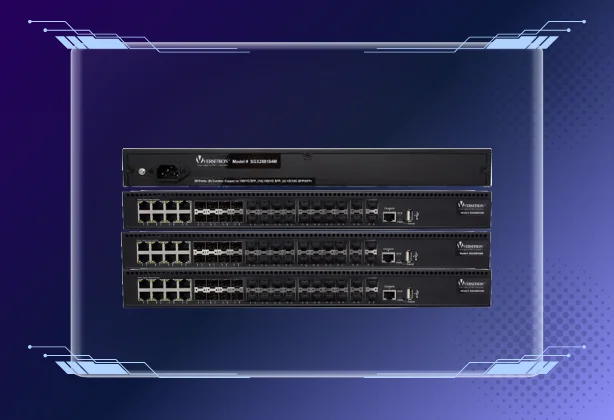What is a Managed Fiber Optic Switch?
A managed fiber optic switch is a network switch that uses fiber optic technology for high-speed data transmission and provides administrators with advanced control over network settings, security, and traffic management. Unlike unmanaged switches, which operate without configuration options, managed switches allow for customization, monitoring, and optimization to ensure maximum performance and security.

Key Features of Managed Fiber Optic Switches
1. Remote Management and Monitoring – Allows network administrators to configure and monitor network performance via web interfaces, CLI, or SNMP protocols.
2. VLAN Support – Enables network segmentation for better security and traffic isolation.
3. QoS (Quality of Service) – Prioritizes critical applications such as VoIP, video conferencing, and cloud services.
4. Traffic Control and Load Balancing – Distributes network traffic efficiently to prevent congestion and bottlenecks.
5. Security Features – Includes port security, access control lists (ACLs), and encryption to protect against cyber threats.
6. Redundancy and Failover Support – Ensures high availability with features like Spanning Tree Protocol (STP), link aggregation, and redundant power supplies.
Benefits of Using Managed Fiber Optic Switches
Superior Speed and Bandwidth
Fiber optic connections allow high-speed data transfer, supporting gigabit and multi-gigabit speeds. Managed switches ensure optimized bandwidth usage, making them ideal for high-performance applications.
Enhanced Network Security
With features like port authentication, VLAN segmentation, and intrusion detection, managed fiber switches provide robust security measures against unauthorized access and cyber threats.
Centralized Control and Customization
Unlike unmanaged switches, managed fiber switches allow IT teams to configure, monitor, and troubleshoot networks remotely, reducing downtime and operational costs.
Improved Network Reliability
Managed switches include failover mechanisms, link aggregation, and self-healing capabilities, ensuring uninterrupted network operations even during failures.
Scalability for Growing Networks
As businesses expand, managed fiber switches offer flexible configuration options, supporting multiple VLANs, advanced routing protocols, and additional network layers for scalability.
Choosing the Right Managed Fiber Optic Switch
1. Port Speed and Capacity
Determine if your network requires Gigabit Ethernet (1G), 10G, 40G, or 100G ports based on data transfer needs.
2. Layer 2 vs. Layer 3 Capabilities
• Layer 2 Managed Switches handle switching within local networks and VLAN segmentation.
• Layer 3 Managed Switches include IP routing capabilities, allowing data transfer across multiple subnets and VLANs without external routers.
3. Network Security Features
Look for 802.1X authentication, MAC filtering, access control lists (ACLs), and encryption to protect sensitive data.
4. Management and Monitoring Options
Ensure the switch supports SNMP, CLI, web-based interfaces, and remote access for easy network administration.
5. Redundancy and Failover Support
For mission-critical environments, choose switches with dual power supplies, link aggregation, and Spanning Tree Protocol (STP) to ensure maximum uptime.

